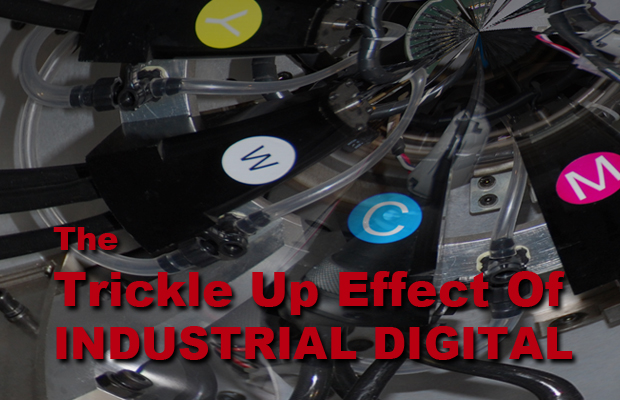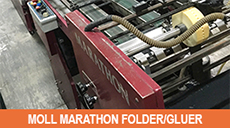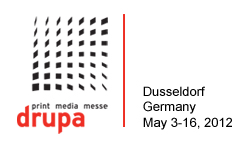Drupa 2012 will probably show off some of what will be the next big thing since litho was launched. The problem now is that what has been built is relatively slow and costly. Some manufacturers point out that initial cost is not the issue - cost per sheet is. They have a point. But when complications of needing to pre-coat an offset or uncoated sheet (prior to print) comes into play, this raises the same questions of any other device that has tried to gain market share. Heidelberg’s GTO-DI as well as their later SM 74-DI had cost of operating issues. They imaged onto plates then blankets and this, although revolutionary at the time, failed in the long term because of the dollars per thousand.
At Drupa 95, the biggest draw at the Heidelberg booth was not the 8 color perfector but the Quickmaster DI-46. Heidelberg sold hundreds very quickly. Just as fast many buyers soon realized the limitations in size and cost of maintenance left little or no financial return. All these early attempts were part of the process to take us to the next step. Some call this “bleeding edge technology” because there is a lot of blood on the floor.
KBA's Scitex (now 100% owned by KBA) created the Karat. A very unique 29” version of digital but again the higher costs as opposed to litho as well as the limited format (4 + coat), left it in a very narrow marketplace. Komori’s Project D which launched at Drupa 2000 became the first 40” press with imaging heads. But all these previous designs were plagued with high costs and only incremental savings compared to litho.
CTP essentially destroyed the on-press imaging business. The PAX-DI, a joint venture between Presstek, Adast and Xerox, was another version of the SM 74-DI concept. It also struggled with similar issues as the others. These early press versions still transferred onto blankets, needed some sort of plate material that had to be mounted and the heads were both delicate and costly to maintain. The technology leap in hindsight was just not there.
The Wall Street Journal recently reported that HP’s Printing Division contributes more than half of the company’s $7.1 billion profits. Having spent $1 billion (in R&D) since 2008, HP’s print related margins have flat-lined. Meg Whitman, HP’s CEO has made it known there will be new products for Drupa and she is focusing on getting past the short run, boutique store-front customer to reach the domains of the Heidelberg and Komori clientele. Clearly with on-demand book and direct marketing presses already in use, this is where the action would seem to be. A 20% per year growth projection is suggested by Vyomesh Joshi, HP’s Print Division head.
So-called Nano technology from the father of commercial inkjet, Benny Landa, is apparently also ready for its debut at Drupa. Landa Digital Printing is Mr. Landa’s new vehicle for launching what Landa Labs has been busy developing. Questions will be raised and soon hopefully answered. But these two (HP and Landa) go back a long way together - and it could be exciting.
Let's, for a moment, look forward 5 years. If in fact the industrial digital platform arrives, how will it affect financing? There are two issues. The first is complex, and involves how the financial community will resolve to provide loans and leases. Litho equipment can be rationalized, but new platform digital? This brings forth the second issue: valuation.
Radically new technology creates havoc when it comes time to appraise a piece of equipment. The new value is known but with the commonly recognized approach to value – Fair Market Value - there may need to be an agreement to seriously look at the little used “income” approach as the main criteria for advancing funds. Usually this approach (income) does not apply to print and is used where specialty equipment, tied to a product, is common. Then finance people can write-up a credit based on the much lower costs of manufacturing [print] and rationalize. Currently anything digital, whether it be CTP or print, has a short technology cycle.
Valuations struggle to reach a 5-year end of term value because it’s known that technology drives these machines more than longevity. When speeds of output change or hours of use go beyond a certain limit, these machines take a big hit in value. The distance between a machine built in 2005 and one today is huge, and often means mothballing or even scrapping the unit. Resale is also very difficult because most equipment has proprietary parts and needs service contracts. This has always affected the photocopier business.
I recently had a discussion with a major leasing company. They were looking at a deal for an ink based new digital platform. The price tag was over $1 million dollars. Being new, it threw a wrench into standard risk-based analysis and they were struggling for insight as to where this technology would be in 5 years. The reality is that right now it’s impossible to forecast valuations or even depreciation as we are just now seeing heavy duty larger format equipment on the horizon. Banks will have a difficult time coming to terms with value.
Fujifilm’s Jet Press 720, long in development, is the dawn of the next generation. How well it is received will be interesting. Unless speeds increase, costs go way down and litho-type dependability is on offer, the Industrial Digital future won’t be arriving en masse to the world’s pressrooms right away. Perhaps, if the current growing mass of Electrophotography suppliers didn’t jump at the chance to buy the manroland business on the cheap, this signals there is still a way to go in implementing a digital mod onto a stable press base.
Other than the few avant-garde printers out there that try the latest gadget, the rest of us will soldier on with what works and right now nothing in the mainstream commercial segment works better than modern litho technology. It took a long time for Benny Landa’s Indigo (now HP) technology to grab market share and it has been very successful. Now we wait and see what will be the next big thing.
|









